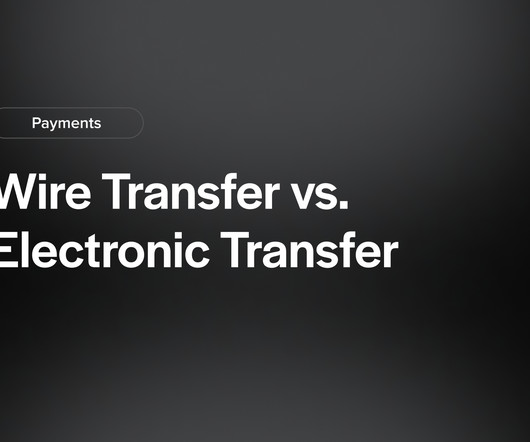What is ACH Credit and ACH Debit and How Do They Work?
Stax
NOVEMBER 13, 2024
It’s like a direct deposit from one account to another, but unlike wire transfers, they are not subject to a fee by the processing banks. Of the two types of ACH transfers, an ACH debit tends to be favored by firms expecting regular ongoing payments. In this setup, the payer “pushes” funds to the recipient’s bank account.











Let's personalize your content